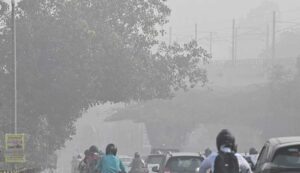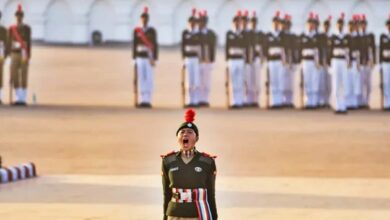Delhi: Air quality in the national capital remains in the ‘severe’ category
New Delhi: According to the Central Pollution Control Board (CPCB), Wednesday’s air quality in the nation’s capital is still classified as “severe.” Delhi’s AQI was reported by the CPCB at 301 at 7 am on Wednesday, placing it in the “very poor” category.

The AQI recorded at Lodhi Road till 7 am, according to CPCB statistics, was 254, IGI Airport (T3) 298, Okhla Phase 298, DTU 250, and Pusa 281.
However, a number of locations in Delhi, including Ashok Vihar 316, Anand Vihar 311, ITO 316, Wazirpur 331, Vivek Vihar 318, and Shadipur 375, continue to have air pollution levels in the “severe” category.
AQI values fall into one of the following categories: acceptable (zero to fifty), satisfactory (51 to 100), moderate (101 to 200), poor (201 to 300), extremely poor (301 to 400), and severe (401 to 500).
One Delhi resident, Nidhi Gupta, stated: “Pollution is not a new problem in Delhi. It takes place annually. It occurs every 20 days or every month. Pollution does occur when the weather sets in and makes adjustments. And while the rest of Delhi’s population has been blown out of proportion, those with health problems are having difficulty. Delhi is where we call home. I’ve been jogging with a well-known Delhi running club for the last six or seven years. In this weather, our coaches take every care.
However, as a result, we sit at home and do nothing else. We sit at home and cease our morning activities. After fifteen days, we abruptly leave home. Therefore, we should continue to engage in little activities. If you drink water, stay hydrated, and eat healthily, pollution won’t impact anybody. Otherwise, it will effect us more. To yet, this pollution has not claimed any lives.
Given the present weather, one Delhi resident suggested that fewer cars should be on the road. In my opinion, online programs are working effectively for older adults and children. And they ought to go on. Additionally, the weather is poor and polluted for the elderly.
Therefore, try to stick to places that require walking and have more trees. Stopping the stubble burning is also necessary; for example, blocks are burned in thermal plants rather than coal. The government of Haryana has provided subsidies to it; our government needs to implement measures that would prevent people from burning stubble.
With an AQI in the severe category, the vicinity of India Gate was still engulfed in haze. Smog covered the area’s high-rise structures, making them invisible to the naked eye.
The Delhi Government’s Directorate of Education instructed all schools in the nation’s capital to abide by the CAQM’s directive earlier on Monday.
According to the CAQM order, “State governments in the NCR shall ensure that all classes up to 12th Standard are conducted in a ‘hybrid’ mode, i.e., both in “physical” and also in “online” modes, wherever online mode is feasible in the districts of Gautam Buddh Nagar, Ahmedabad, Gurugram, and Faridabad in the NCR.”
In accordance with the CAQM order, the Delhi Cantonment Board, NDMC, MCD, and heads of all government-aided and unaided private schools under its jurisdiction have been instructed by the Directorate of Education, Government of Delhi, to begin offering hybrid classes to students in all classes immediately until further directives.





